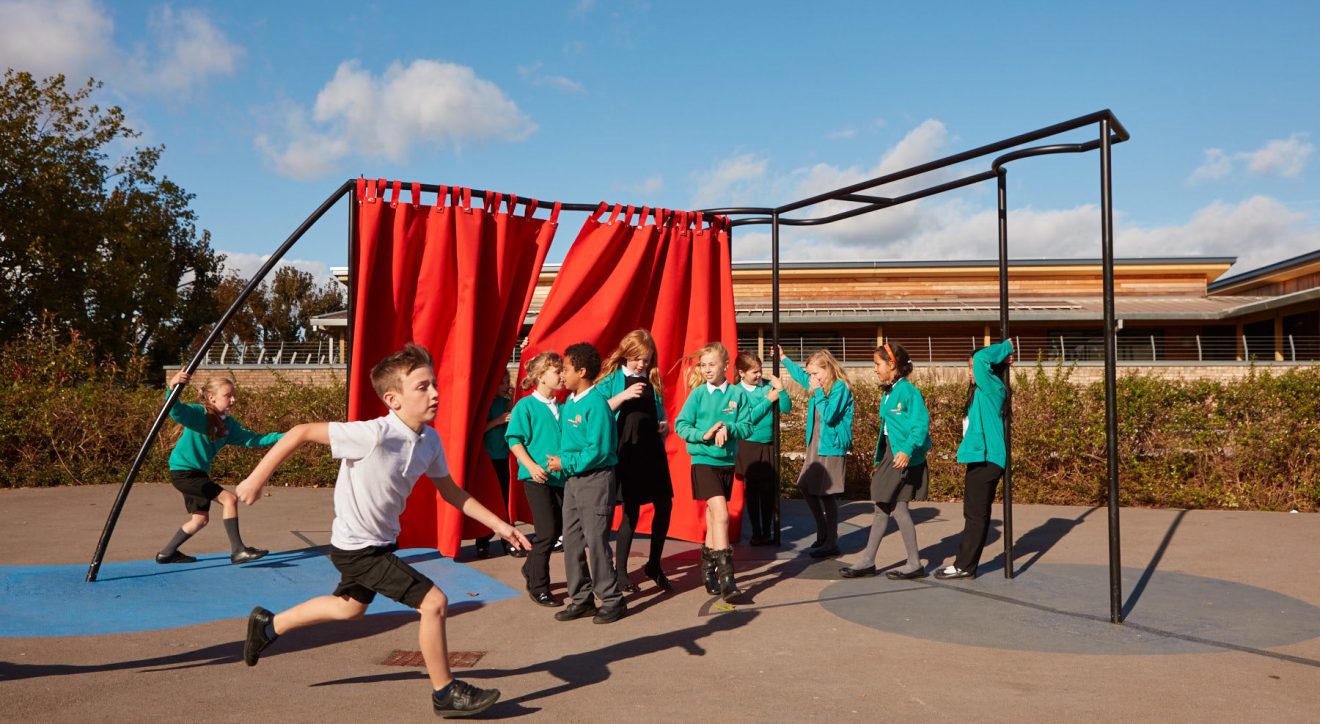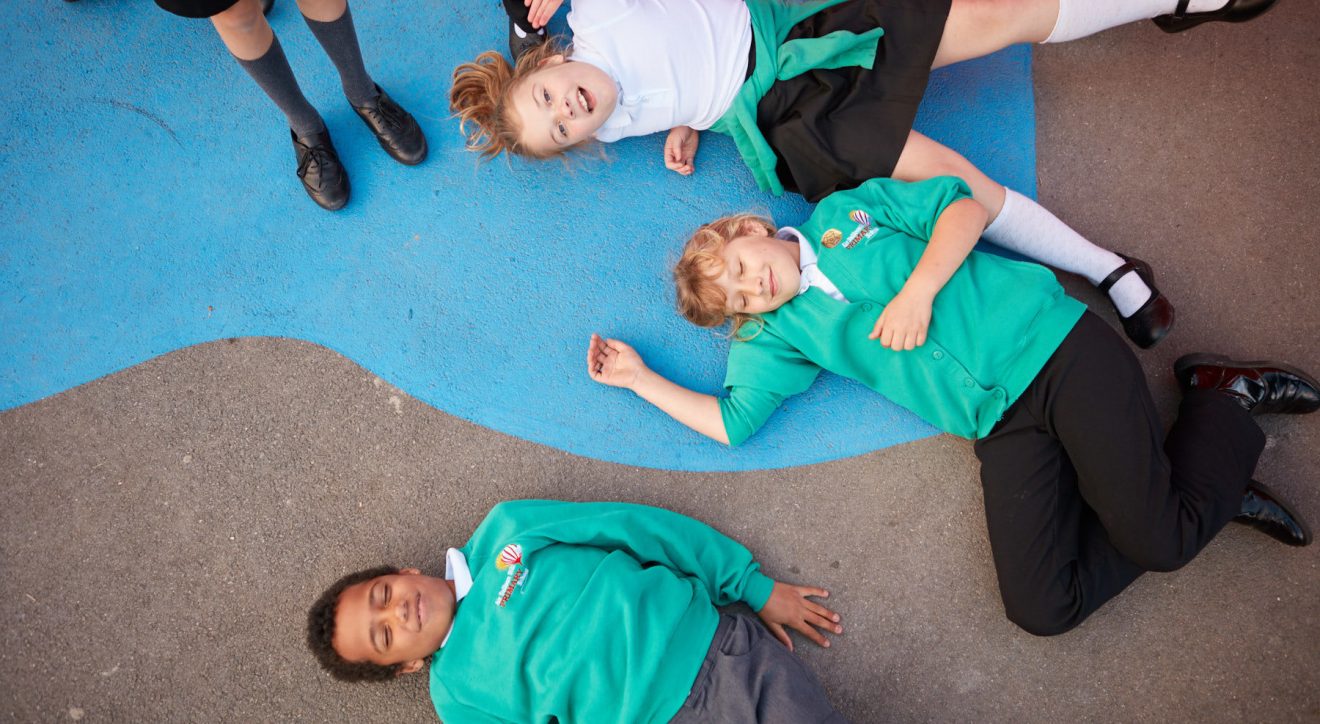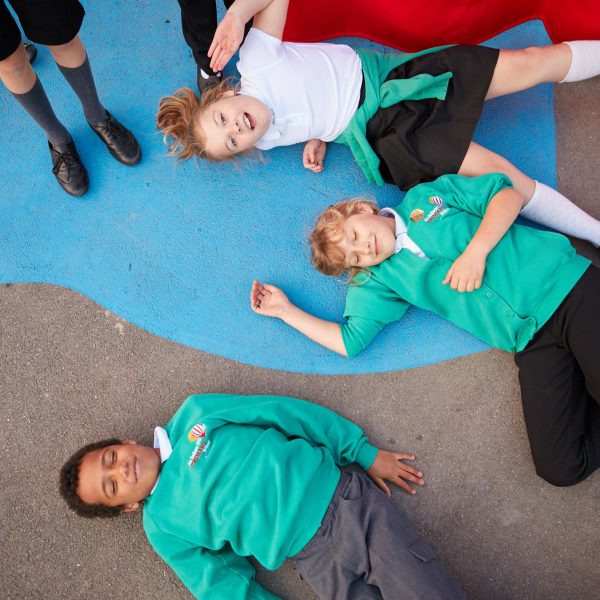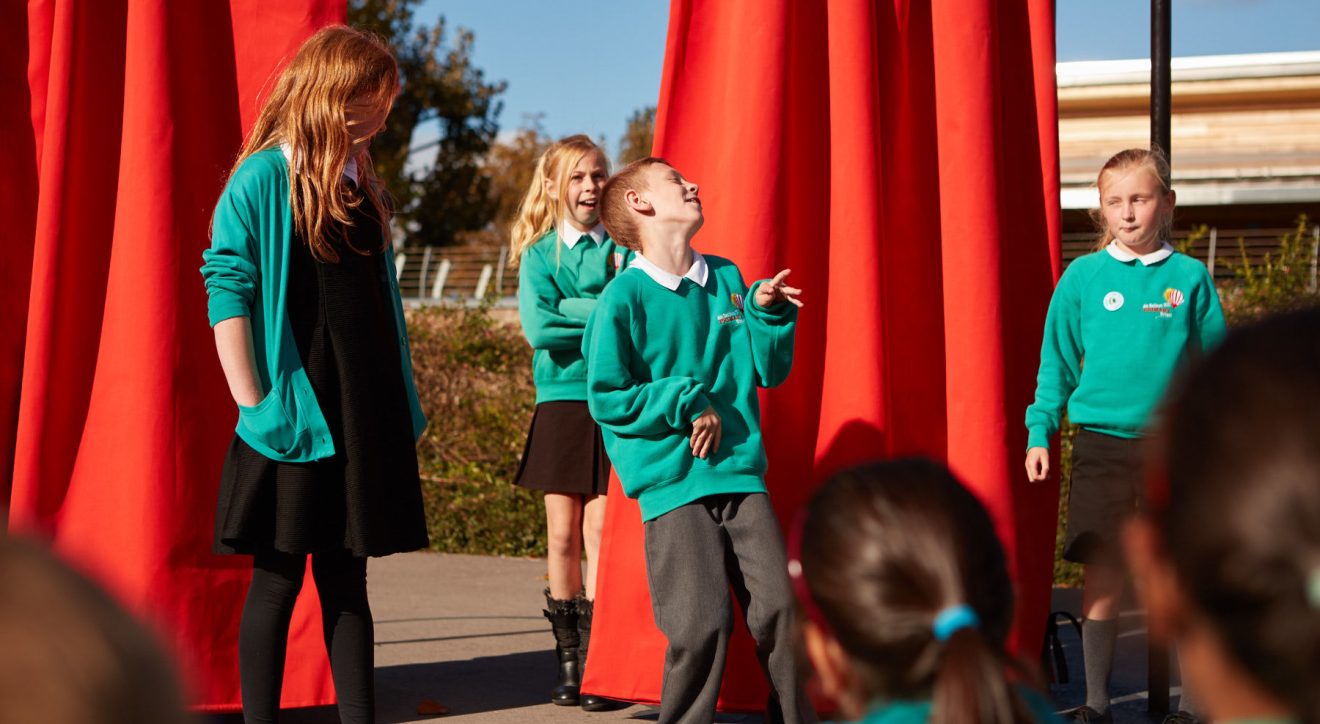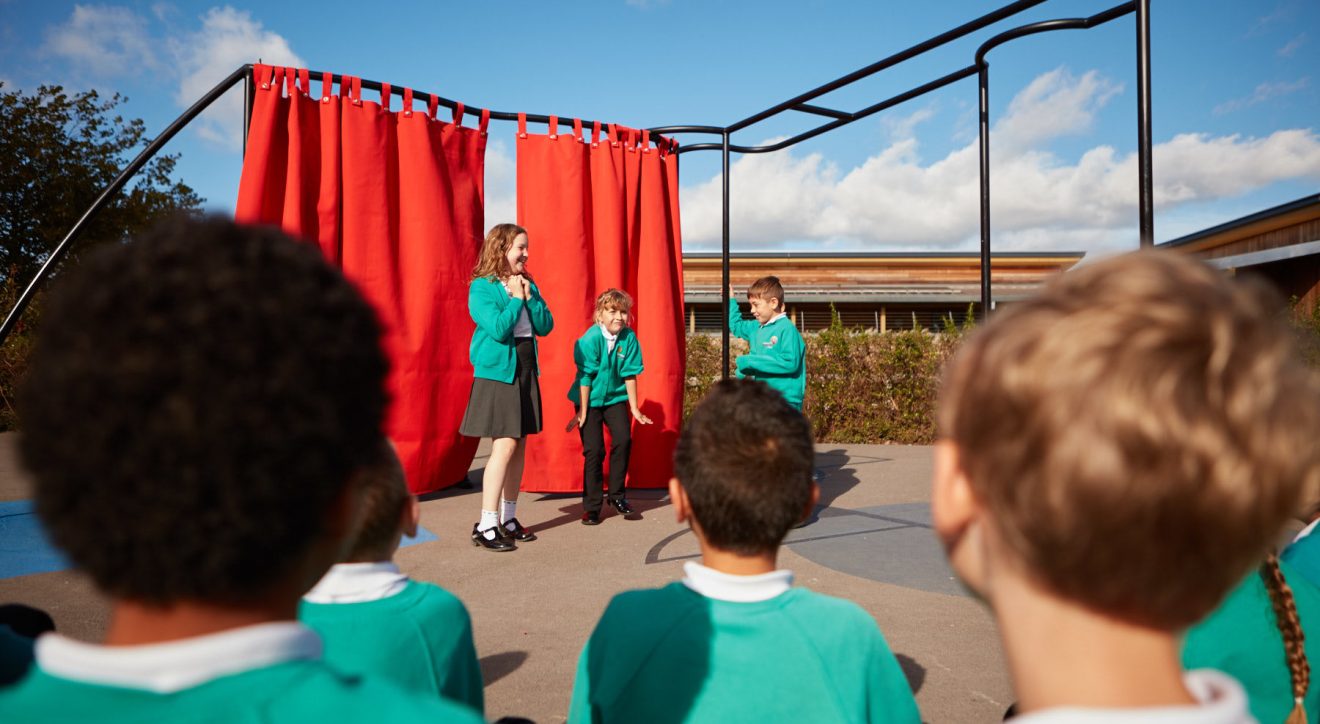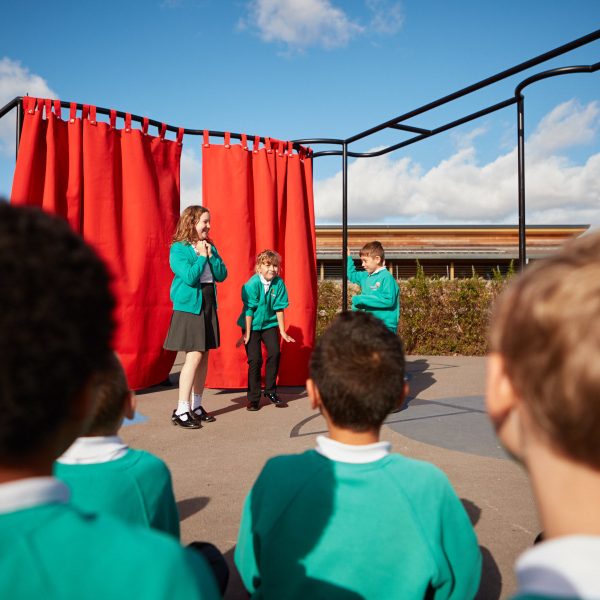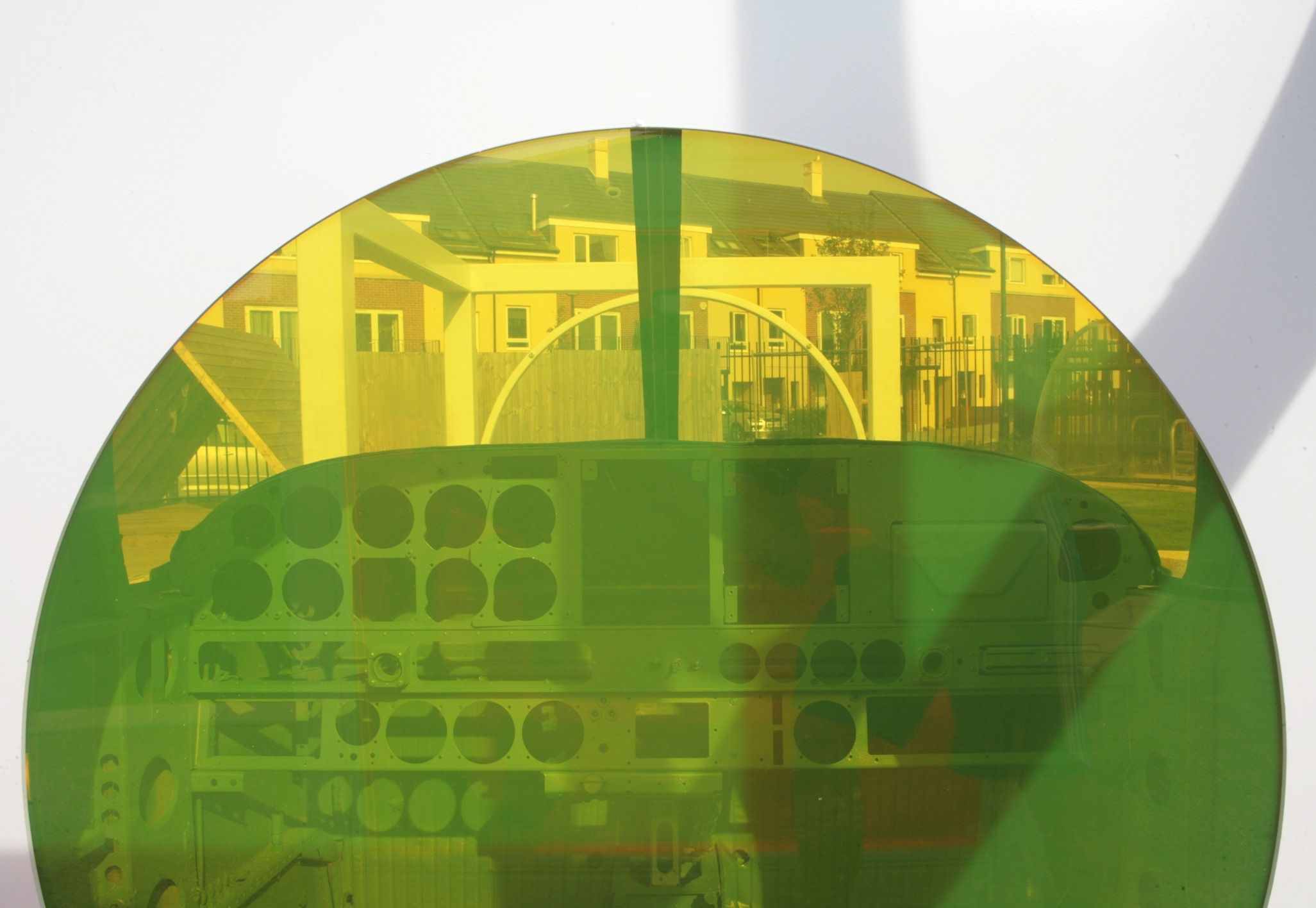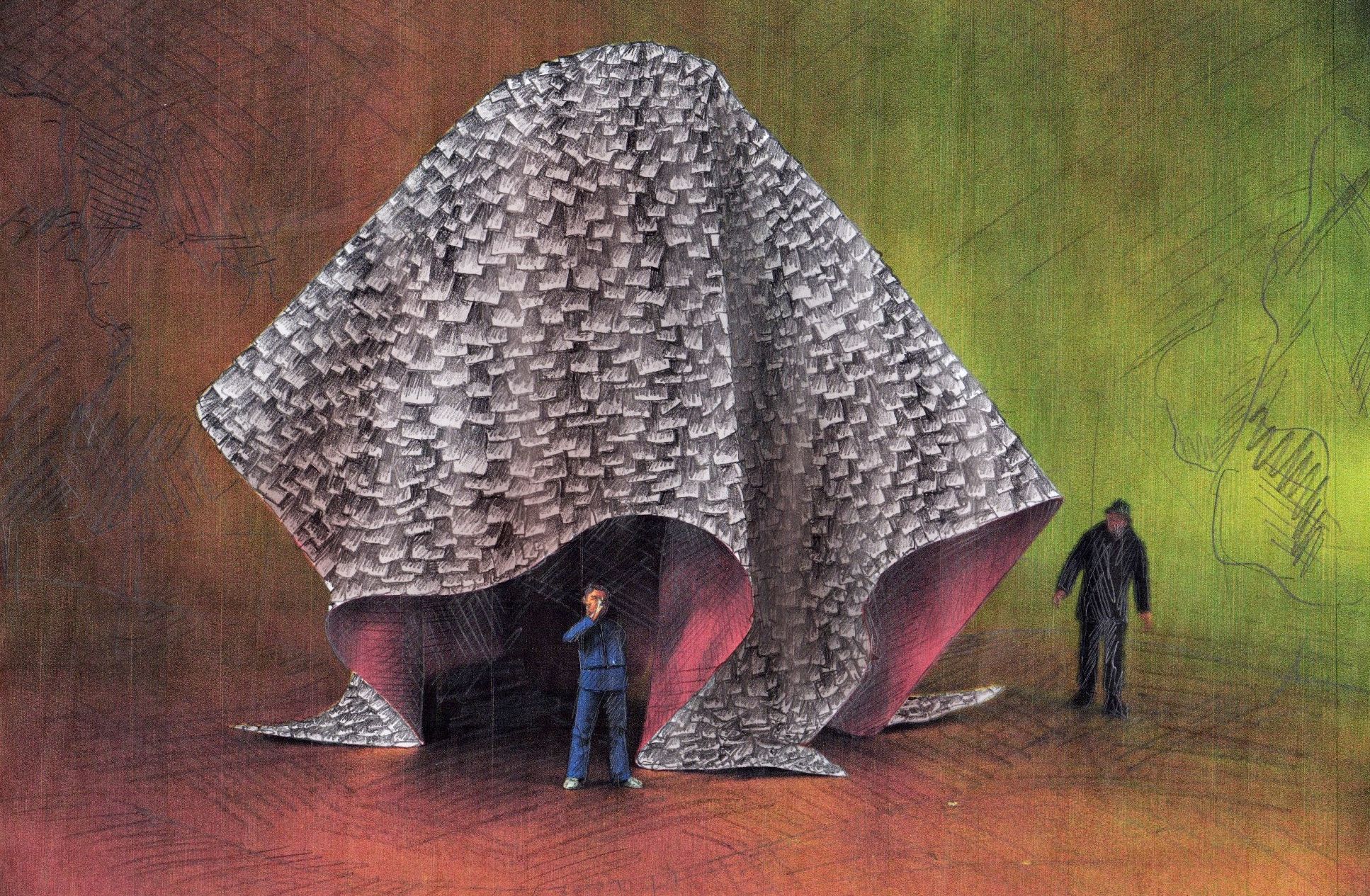
2014 - 2016
Primary/Bristol: Air Balloon Hill Primary School
Synopsis
The redevelopment of Air Balloon Hill Primary School is part of Bristol City Council’s Primary/Bristol series of artist commissions for primary schools commissioned as part of the Primary Capital Education Programme. As part of the development, speculative architectural practice Post Works were commissioned by project curators Arnolfini to develop an art work for the school working closely with pupils, teaching staff and Head Teacher.
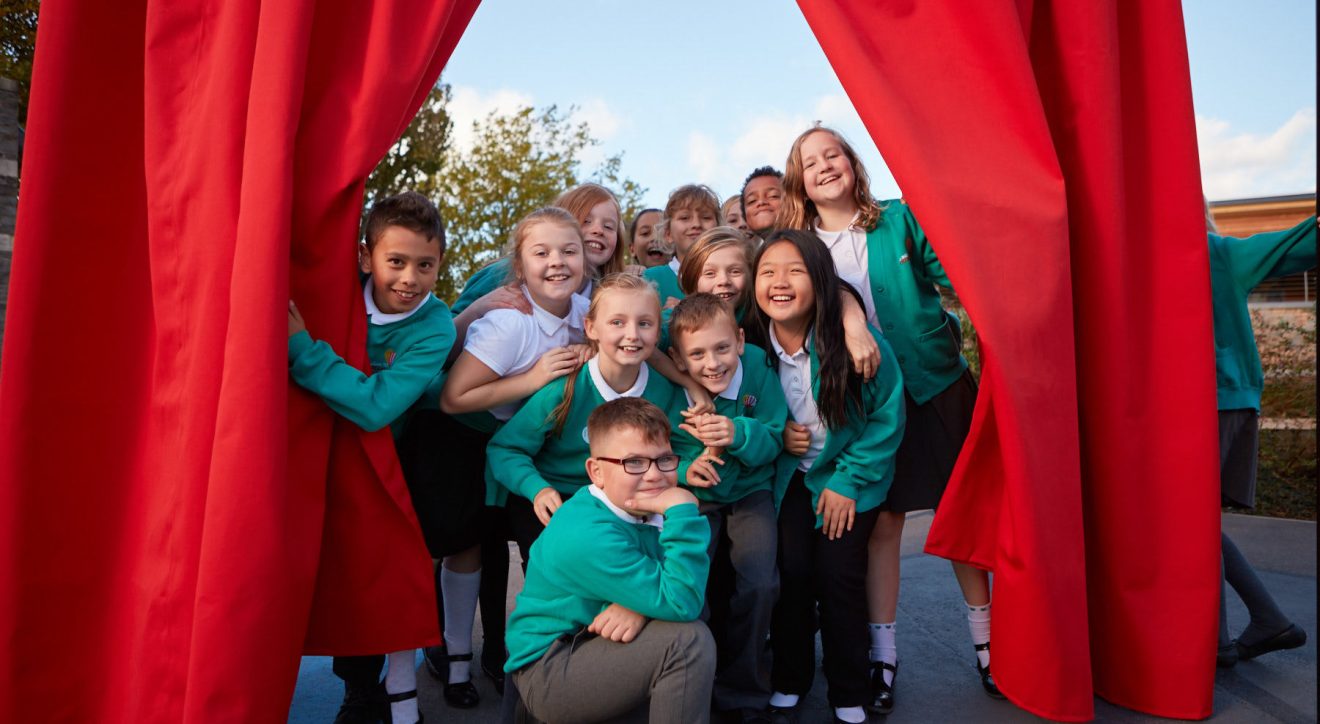
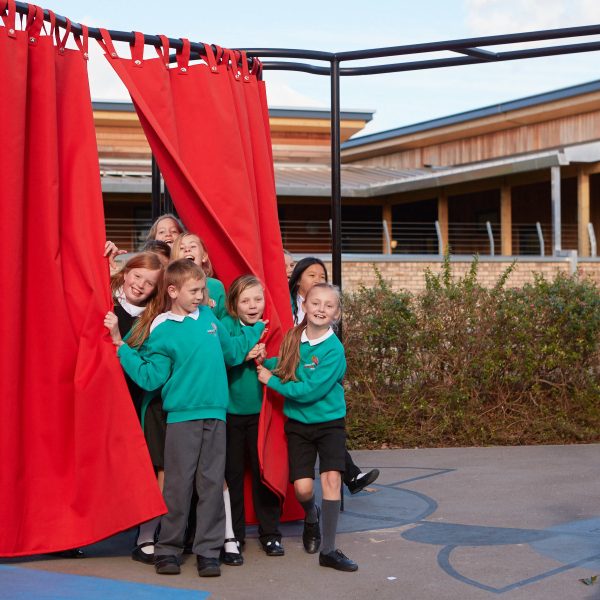

In other words, the playground, instead of telling the child what to do (swing here, climb there) becomes a place for endless exploration, of endless opportunity for changing play. Isamu Noguchi, 1952Isamu Noguchi, 1952

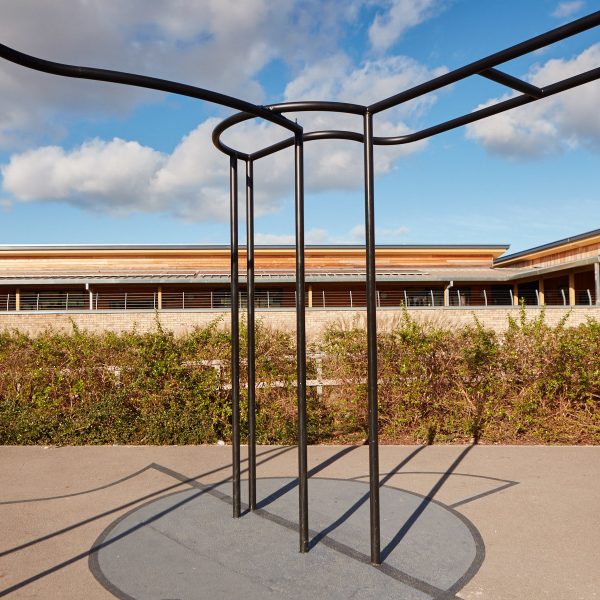
‘In other words, the playground, instead of telling the child what to do (swing here, climb there) becomes a place for endless exploration, of endless opportunity for changing play.’ – Isamu Noguchi, 1952
The artists responded to the need for a space where the school could gather for outdoor events and performances whilst allowing the playground to be used for day-to-day activities. The artwork draws inspiration from the playground projects of artist and landscape architect Isamu Noguchi (quoted above), whose compositions of abstract shapes and forms invite imaginative interpretation by children rather than presenting instantly recognisable shapes and forms.
Post Works proposed a black line drawn in space, extended by a painted pattern on the playground surface and the changing shadows cast by the steel structure itself. Drawing on the metaphorical and spatial construct of the proscenium arch, found in the theatre, the structure presents a framed window or notional stage for school performances. A pair of red curtains, finished by a sailmaker in Bristol, dress the structure for performances and events.
This commission is funded by Bristol City Council and was completed in September 2016.
This project has been made possible through funding from Bristol City Council as part of the Primary Capital Education Programme.
Post Works is a constantly evolving collaborative practice founded by Melissa Appleton and Matthew Butcher in 2010. Since its inception, Post Works have produced projects for galleries, theatres and performance venues as well as ‘off-site’ locations. At the core of their practice is the desire to unearth the performative potential of architectural space at both urban and intimate scales.
Post Works have collaborated with artists such as Daria Martin, Rosemary Butcher, Edwin Burdis and Pablo Bronstein. Recent projects include Writtle Calling/2EmmaToc (2012), a radio station and performance space in Essex; Boy Oh Boy, Am I Living (2012), a video work and environment presented at Milton Keynes Gallery; and Wash House Carnival (2012), exhibited at The CAAA Centre for Art and Architecture Affairs in Guimarães, as part of the 2012 European Capital of Culture, Portugal.
Matthew Butcher is a designer and academic and founding member of Post Works. He is cofounder and editor of architectural fanzine P.E.A.R. and is Lecturer in Architecture and Performance at the Bartlett School of Architecture, UCL. In 2016 he completed Flood House, a prototype structure moored at various sites in the Thames Estuary as part of the Radical Essex programme led by Focal Point Gallery, Southend-on-Sea.
www.bartlett.ucl.ac.uk/people/?school=architecture&upi=MDBUT59
www.pearmagazineuk.blogspot.co.uk
www.flood.house
Melissa Appleton is an artist and founding member of Post Works. Her work develops from varied encounters with a site, whether a physical location, archive or other, and usually manifests beyond the gallery walls. Melissa makes constructed spaces, animated by sound, moving image and live events. In 2016 Melissa received an Arts Council of Wales Creative Wales Award and is a Visiting Research Fellow at the Henry Moore Institute, Leeds. Melissa is a Visiting Lecturer at the Ruskin School of Fine Art, University of Oxford.
www.ruskin-sch.ox.ac.uk/people/melissa_appleton
Arnolfini is one of Europe’s leading independent, contemporary arts organisations, and is the flagship art centre for the South West of England with 450,000 visitors annually. 2011 is the year of Arnolfini’s 50th anniversary. Since its foundation in 1961, Arnolfini has built an international reputation for commissioning and presenting innovative, experimental work in the visual arts, always with a strong emphasis upon audience engagement. Many thousands of artists and performers have been involved with Arnolfini during this time, often gaining their first opportunity before going on to long-term success, and this wealth of creativity has been appreciated and enjoyed by consistently large audiences. Much of this groundbreaking work would not have been made or shown in Bristol and the South West region without the Arnolfini. Previous major solo exhibitions at Arnolfini have included: Marcel Broodthaers, Bridget Riley, Richard Long and Liam Gillick, as well as more recently Cosima von Bonin in 2011.
Air Balloon Hill Primary School opened on the 1st of September 2009 following the amalgamation of two successful, but separate, infant and junior schools. The school, which is situated in the East Bristol suburb of St George, was built in 1905 and architecturally is fairly typical of schools built at that time. In 2012-2013 extensive work was carried out and the school now benefits from new classrooms, a state of the art front entrance and an extended school kitchen. The finished buildings combine the best of old and new – 1905 grandeur with 21st century efficiency and beauty. Air Balloon Hill Primary School strive to be the best academically, to care for the environment and develop good relationships in their community, locally and internationally. Their school motto is ‘We look to the stars, not our feet.’
Commissioner: Aldo Rinaldi
Lead artist/producers: Post Works
Curator of Learning: Ellie Coleman (Arnolfini Gallery)
Steel fabrication: Haearn Fabrication Ltd
Curtains: Elaine Arrowsmith and Bristol Sails
Installation: Richard White (Counterwork) and Dan Halahan
